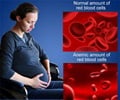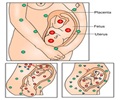
But in 2008, the rate was almost unchanged, at 28 per 1,000, due to a surge in abortions in developing countries.
This rose from 44 percent of the total in 1995 to nearly one in two -- 49 percent -- in 2008, inflicting a traumatic toll in death and injury.
"The declining abortion trend we had seen globally has stalled, and we are also seeing a growing proportion of abortions occurring in developing countries, where the procedure is often clandestine and unsafe," said Gilda Sedgh of the Guttmacher Institute in New York.
"This is cause for concern."
The UN World Health Organisation (WHO) defines unsafe abortion as a pregnancy termination performed by an individual lacking the necessary skills, or in an environment that does not conform to minimal medical standards or both.
Advertisement
Each year, around 8.5 million women in developing countries encounter abortion complications that are so serious they need medical care.
Advertisement
Primarily intended as a treatment for gastric ulcers, the drug is also licensed in France, Spain and half a dozen other countries for pregnancy termination.
It is now increasingly being used illegally in countries where there are restrictive laws on abortion, says the investigation. Incorrect doses are leading to complications such as prolonged and heavy bleeding and incomplete abortions.
In overall terms, there were 43.8 million abortions in 2008, up by 2.2 million from 2003, said the paper.
Researchers attributed this to the continuing rise in the world's population and to less use of contraception, especially in developing countries, which now account for more than three-quarters of all abortions.
Expressed as a percentage of the population of fertile women, the rate of abortions remained largely unchanged.
"This plateau coincides with a slowdown in contraceptive uptake," said Sedgh, whose team was partnered by the WHO in the research.
"Without greater investment in quality family planning services, we can expect this trend to persist."
Eastern Europe -- where under a Communist-era legacy, terminations are freely available but contraceptive use still lags -- had the most abortions of any regions, with 43 per 1,000 women in 2008.
This was followed by the Caribbean (39 per 1,000), eastern Africa (38), central Africa and Southeast Asia (36).
The lowest abortion rates were in western Europe (12 per 1,000 women), southern Africa (15), Oceania (17), northern Africa (18) and North America (19).
For unsafe abortions, the riskiest regions were Central and South America and central and western Africa, where 100 percent of all pregnancy terminations fell into this category.
In western Europe and North America more than 99.5 percent of abortions were deemed safe.
In Asia, the picture was mixed. In East Asia, fewer than 0.5 percent of abortions were unsafe, but in south-central Asia, the share was 65 percent.
The study is based on two sources of data, with 2008 the latest year for which complete and reliable statistics were available.
Safe abortion estimates came mainly from official statistics and surveys considered to be representative of a country; unsafe abortion estimates were based on published studies, hospital records and surveys of women.
Source-AFP















